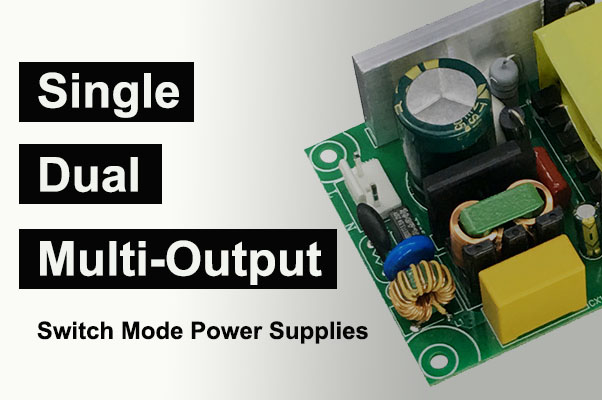Switch Mode Power Supplies (SMPS) are essential components in modern electronics, providing efficient and reliable power conversion. These power supplies come in various configurations, including single-output, dual-output, and multi-output designs. This article delves into the characteristics, advantages, and applications of these different types of SMPS, helping you choose the right power supply for your needs.
Single-Output Switch Mode Power Supplies
Definition
Single-output SMPS provide one fixed output voltage and current. They are the simplest form of switch mode power supplies, designed to deliver power to a single load.
Characteristics
- Simplicity: With only one output, these power supplies are straightforward in design and operation.
- Stability: They offer a stable voltage output, making them ideal for applications requiring a consistent power supply.
- Cost-Effective: Generally, single-output SMPS are less expensive due to their simpler design and fewer components.
Applications
- Consumer Electronics: Used in devices like laptops, TVs, and mobile chargers.
- Industrial Equipment: Powers sensors, actuators, and other single-voltage components.
- Medical Devices: Ensures reliable power for critical equipment like diagnostic tools and monitoring devices.
Dual-Output Switch Mode Power Supplies
Definition
Dual-output SMPS provide two distinct output voltages. This configuration is beneficial for applications requiring multiple voltage levels from a single power supply unit.
Characteristics
- Versatility: Can power two different loads with different voltage requirements.
- Space-Saving: Eliminates the need for multiple power supplies, saving space in compact designs.
- Cost-Efficiency: Reduces overall cost compared to using two separate single-output power supplies.
Applications
- Computer Systems: Supplies power to both logic circuits (5V) and peripherals (12V).
- Communication Equipment: Powers different modules within telecommunication devices.
- Automation Systems: Provides power for controllers and actuators needing different voltages.
Multi-Output Switch Mode Power Supplies
Definition
Multi-output SMPS offer three or more output voltages, catering to complex systems with diverse power requirements.
Characteristics
- Comprehensive Power Solution: Supports multiple devices or components within a system.
- Complex Design: More intricate circuitry to manage multiple outputs effectively.
- Integrated Protection: Often includes features like overvoltage, overcurrent, and thermal protection for each output.
Applications
- Embedded Systems: Powers various subsystems within an embedded application.
- Networking Equipment: Supplies different voltages to routers, switches, and other network devices.
- Medical Instruments: Provides stable and isolated power for different functional units within a medical device.
Choosing the Right Power Supply
When selecting an SMPS, consider the following factors:
- Voltage Requirements: Determine the voltage levels needed for your application.
- Current Capacity: Ensure the power supply can deliver sufficient current for all connected loads.
- Efficiency: Higher efficiency reduces energy consumption and heat generation.
- Size and Form Factor: Choose a power supply that fits the physical constraints of your design.
- Regulatory Compliance: Ensure the power supply meets relevant safety and performance standards.
Conclusion
Understanding the differences between single, dual, and multi-output switch mode power supplies is crucial for designing and implementing efficient power solutions in various applications. Single-output SMPS are ideal for straightforward, single-voltage needs, while dual-output SMPS offer flexibility for applications requiring two voltages. Multi-output SMPS provide a comprehensive power solution for complex systems with multiple voltage requirements. By carefully considering your application’s specific needs, you can select the appropriate power supply to ensure reliable and efficient operation.
